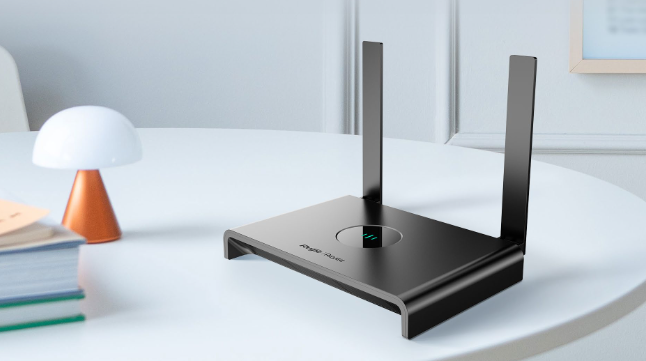Wi-Fi 4, also known as 802.11n, is a milestone wireless local area network (WLAN) standard. Compared to its predecessor, Wi-Fi 4 offers upgrades in frequency band support, transmission speed, signal coverage, security, and compatibility, laying a solid foundation for subsequent WLAN technological advancements. Today, the next-generation WLAN technology standard has reached the Wi-Fi 7 stage. What technological advancements have been made from Wi-Fi 4 to Wi-Fi 7? What technical challenges will future iterations face?

From Wi-Fi 4 to Wi-Fi 7, Technological Advancements Have Evolved Rapidly
In simple terms, the technical upgrades from Wi-Fi 4 to Wi-Fi 7 mainly include the following aspects:
- Expansion of Speed and Frequency Bands:
Wi-Fi 4 (802.11n) introduced MIMO technology and a 40MHz bandwidth for the first time, providing more stable connections.
Wi-Fi 5 (802.11ac) focused on the 5GHz frequency band, supporting higher data rates, making it suitable for HD streaming and online gaming.
Wi-Fi 6 (802.11ax) further improved system efficiency, especially in device-dense environments, offering lower latency and higher energy efficiency.
Wi-Fi 7 (802.11be) is expected to open the widest 320Hz channels on the 6GHz frequency band, with a theoretical maximum transmission speed of up to 46.1Gbps, nearly four times that of Wi-Fi 6.
- Advances in Modulation Technology:
From Wi-Fi 4's 64-QAM to Wi-Fi 5's 256-QAM and Wi-Fi 6's 1024-QAM, each generation has significantly increased data transmission density.
Wi-Fi 7 introduces 4096-QAM, allowing each modulation symbol to carry 12 bits, representing a theoretical 20% improvement over Wi-Fi 6's 1024-QAM (10-bit).
- Enhanced MU-MIMO Technology:
Wi-Fi 4 introduced the first generation of MIMO technology, while Wi-Fi 7 supports up to 16 spatial streams in MU-MIMO, which is double the 8 spatial streams supported by Wi-Fi 6.
- Multi-Link Operation (MLO):
Wi-Fi 7 introduces the innovative MLO technology, allowing devices to connect to multiple channels simultaneously and switch intelligently between them to avoid network congestion and interference.
- Orthogonal Frequency-Division Multiple Access (OFDMA) Technology:
Wi-Fi 7 improves OFDMA technology, allowing a single terminal to occupy multiple Resource Units (RUs), thereby enhancing spectrum efficiency.
- Security Enhancements:
Wi-Fi 7 adopts the latest WPA3 security protocol, introducing stronger encryption algorithms and authentication methods such as Simultaneous Authentication of Equals (SAE) and 256-bit encryption.
- Expansion of Application Scenarios:
Wi-Fi 7 is designed to support emerging applications such as 4K/8K video streaming, virtual reality, and video conferencing, with higher requirements for wireless communication bandwidth and time sensitivity (e.g., latency, jitter, packet loss rate).
These technological upgrades collectively drive significant improvements in wireless network performance, providing users with faster, more stable, and more secure network connections. At present, some manufacturers have already launched devices supporting the Wi-Fi 7 standard. For example, Ruijie Reyee became the first SMB vendor to introduce Wi-Fi 7 products to the market. Their Wi-Fi 7 devices are equipped with the latest cutting-edge technologies, which help effectively reduce network latency, improve data transmission rates, and ensure smooth network usage in any scenario.

Ruijie Reyee Wi-Fi 7 BE14000 Tri-Band Ceiling Access Point
What Challenges Must Be Overcome for Further Development of WLAN Technology?
In the future network world, there is room for improvement in several areas of WLAN technology, including key performance enhancements, security improvements, management optimization, and integration with new technologies. To achieve this, manufacturers need to address the following challenges:
- Increasing Throughput Capacity: As the actual throughput of network devices fluctuates significantly, WLAN needs to improve overall network connectivity and stability by ensuring seamless connections between low-speed and high-speed networks, while also increasing actual transmission speeds.
- Enhancing Security: In any network communication process, security issues related to real-world applications must be addressed. Manufacturers need to implement reasonable encoding adjustments to ensure robust data protection during both transmission and reception, while enabling encryption through a unified data network control mechanism.
- Enhancing Integration with New Technologies: With the continuous application and development of information technology, it is essential to increase the level of integration and connection with new technologies to effectively improve signal transmission speeds in wireless network applications.
- Roaming Handoff Issues: Roaming in WLAN is also crucial. In a wireless network, if a mobile terminal moves beyond the subnet coverage, IP packets cannot reach the device, causing ongoing communication to be interrupted. Manufacturers need to leverage mobile IP technology to overcome geographic limitations of networks and address issues caused by DHCP-based handoffs across subnets, such as communication interruptions and changes in user permissions.
- Wireless Network Management Issues: The increasingly complex network systems necessitate the establishment of corresponding wireless network management systems. It is essential to consider standard network management communication methods, network monitoring and reporting, and efficient bandwidth utilization.
- Application of Millimeter-Wave Technology: Millimeter-wave technology brings large bandwidth and strong anti-interference capabilities to WLAN, but it also introduces new technical challenges and requirements, such as high path loss, penetration loss, atmospheric attenuation, and sensitivity to obstacles.
- High Connection Density: In future application scenarios such as smart homes and office campuses, next-generation WLAN needs to support higher connection density through technologies like large bandwidth, massive MIMO, and multi-AP coordination.
- Ultra-High Spectrum Efficiency and Wide Channel Bandwidth: Achieving high-order modulation in millimeter-wave bands is challenging. It requires implementing large-scale MIMO and high-order modulation technologies in millimeter-wave bands to ensure high spectrum efficiency and achieve wide channel bandwidth.
- High Energy Efficiency: The dense deployment of access points (APs) and ultra-large-scale connections significantly increase wireless network energy consumption. It is necessary to comprehensively improve energy efficiency to achieve a clean and green wireless network.
- High Positioning Accuracy and Sensing Precision: Millimeter-wave WLAN requires high-power transmitters and dense AP deployments to enhance area coverage and signal transmission capabilities. At the same time, it must possess strong intelligence and sensing capabilities, which presents a significant challenge for manufacturers.
rom Wi-Fi 4 to Wi-Fi 7, the WLAN field has brought many pleasant surprises to users. As of now, the development prospects of the WLAN market remain widely optimistic, with continuous business opportunities emerging. As market demand continues to grow and become more refined, manufacturers will deepen the integration with new technologies, enhance security, and improve product stability. They will also further grasp the global growth trends and market dynamics to identify matching investment opportunities and directions, optimizing their business models. This will, in turn, invisibly drive the continuous development of the industry.
Featured Articles
- Networking Tools for Retail Stores: The Core Value of Cloud-Managed APs












